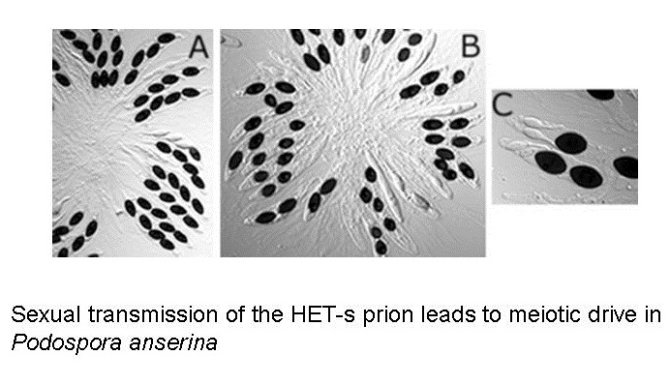Project
The het-s prion of Podospora anserina causes meiotic drive and heterokaryon incompatibility
In natural populations of P.anserina two alleles of the het-s/S locus are found: het-s and het-S. Strains of the het-s genotype can have two phenotypes: the active prion-infected [Het-s] phenotype which is antagonistic to the alternative allele het-S, and the prion-free [Het-s*] phenotype which is neutral in interaction to het-S.
Description:
The antagonistic interaction results in heterokaryon incompatibility at the somatic level, and in spore killing at the sexual level: from a cross between het-s and het-S spores of het-S are killed whereas spores of het-s survive. As a result of the meiotic drive of het-s, it is expected to increase in frequency. Relevant research questions that can be looked into:
- How is the frequency distribution of the het-s/S alleles in the natural population
- What is the frequency of prion-infection among the het-s isolates in nature
- Is there also polymorphism for het-s/S in related Podospora species
- Expression of het-s in the ascomycete Aspergillus nidulans: does it form prion? Is there antagonism to het-S?

Used skills:
microbiological and molecular biology skills, bioinformatics, some statistical analysis to interpret the results.
Requirements:
Molecular and Evolutionary Ecology (GEN20304) and Genetic Analysis Tools and Concepts (GEN30306) are good preparations.
Reference:
Dalstra et al. (2005) Non-mendelian inheritance of the HET-s prion or HET-s prion domains determines the het-S spore-killing system in Podospora anserina. Fungal Genet. Biol. 42: 836-847